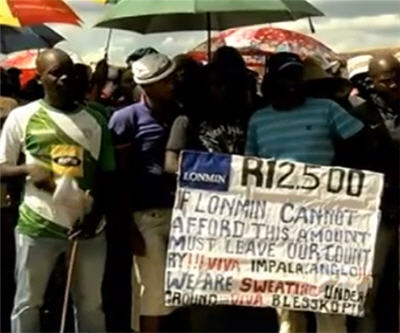Why the strikes are doing nothing for the platinum price

Workers began labour action a week ago at the world’s three largest platinum producers, Anglo American Platinum (LON:AAL), Imapala Platinumm (OTCMKTS:IMPUY) and Lonmin (LON:LMI).
Together the South African companies’ mines produce 3.5 million ounces in 2012 almost 60% of the world’s platinum.
Barclays says in a research note the coordinated strike action is bound to significantly disrupt supply, but given the huge inventories built up at the big three producers, upside for the platinum price is limited.
Indeed, since the strike action kicked off on Thursday last week, the spot platinum price on Nymex in New York is down almost 5%; last trading at $1,384.30. The picture for palladium, last trading at $708, is much the same.
The reason for the soft price is mostly due to stockpiles at Nymex warehouses which are up 20% year on year to the highest level in 10 years at more than 250,000 ounces.
At the same time producers have added some 200,000 ounces to above ground stocks over the year to end September.
A physically-backed platinum ETF launched by a Johannesburg bank in April has also pulled in 770,000 ounces of metal, although plans for a palladium ETF has now been pushed out.
Scrap supply is also expected to rise sharply by almost 13% this year to 1.3 million ounces.
That compares to the UK bank’s estimates of roughly 10,000 ounces of platinum and 5,000 ounces of palladium production lost each day due to the strikes, which does not seem closer to resolution.
Over the last two years following deadly clashes at a Lonmine mine in the country, the three companies lost a combined 880,000 ounces due to strikes and labour unrest, but the shaky mine supply picture has not moved the price.
Compared to this time last year the precious metal, used primarily for emission reduction in autos and also in television and computer screens, is down 18.6%.
More News
{{ commodity.name }}
{{ post.title }}
{{ post.date }}

Comments